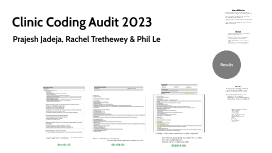Audit Presentation
Transcript: Increase maximum amount available from $10M to $20M Double repay period by extending the maturity date for another 3 years Reduce interest rate on amounts drawn from LIBOR+7.5% to LIBOR+3% Reduce commitment fee on undrawn balance from 2% to 0.5% Non-recognized subsequent event -- Evidence about conditions that did not exist at the date of the balance sheet Disclose to keep the financial statements from being misleading Shakespeare paid $10 million on March 10, 2011, to acquire competitor company Hamlet. On the basis of its initial assessment from the Company’s due diligence (that started shortly before the balance sheet date), management’s best estimate of the allocation of the $10 million purchase is as follows: $2 million of current assets $5 million of identifiable noncurrent assets $2 million of intangible assets $1 million of goodwill. The estimated purchase price allocation has not been finalized and is expected to be after the financial statements are issued. How, if at all, is the acquisition of Hamlet recognized or disclosed in the financial statements? Records the incurred but not yet reported (IBNR) costs as the estimate of medical benefits payable Third party estimates Historically accurate Continuously check for reasonableness Claims received within 2 months Estimate balance was $1.75M as of 12/31/10 Claims were $0.75M as of 3/18/11 855-10-25-3: An entity shall not recognize subsequent events that provide evidence about conditions that did not exist at the date of the balance sheet but arose after the balance sheet date but before financial statements are issued or are available to be issued. Let's Look at GAAP 855-10-50-3: An entity also shall consider supplementing the historical financial statements with pro forma financial data. Occasionally, a non-recognized subsequent event may be so significant that disclosure can best be made by means of pro forma financial data. Such data shall give effect to the event as if it had occurred on the balance sheet date. In some situations, an entity also shall consider presenting pro forma statements, usually a balance sheet only, in columnar form on the face of the historical statements. 805-10-50-2: To meet the objective in the preceding paragraph, the acquirer shall disclose the following information for each business combination that occurs during the reporting period: a. The name and a description of the acquiree b. The acquisition date c. The percentage of voting equity interests acquired d. The primary reasons for the business combination and a description of how the acquirer obtained control of the acquiree Do not recognize Disclose terms and date of modifications under the subsequent event note No financial impact directly from modifications Note: Items (e) through (h) do not apply to Shakespeare's acquisition of Hamlet Let's Look at GAAP Disclosure Change as an SEC Filer Medical Benefits Payable cont. 855-10-55-2: The following are examples of nonrecognized subsequent events addressed in paragraph 855-10-25-3: Medical Benefits Payable Group 7 - Charlie Blackstock, Kori Gibbs, Kate Harris, Tracy Liu, Yanni Ma, and David Weber Let's Look at GAAP Review Subsequent Events Subsequent Events Disclosure Date Let's Look at GAAP Let's Look at GAAP GAAP ASC 855-10-25-1A: the entity shall evaluate subsequent events through the date the financial statements are issued Financial statements are issued: when they are widely distributed to shareholders and other financial statement users for general use and reliance in a form and format that complies with GAAP What should Shakespeare do? Assuming that the company will issue their financial statements on the planned date, they should disclose the date of March 20, 2011 in the footnotes Shakespeare could choose to do this, but since the purchase price allocation isn't finalized, maybe don't do this. Events or transactions that occur after the balance sheet date but before financial statements are issued or are available to be issued. Following ASC 855-10-50-1, they must disclose: (a) the date through which subsequent events have been evaluated March 18, 2011 (b) that date is when the financial statements were available to be issued They were available to be issued at that time, but not issued until March 20, 2011 a. Sale of a bond or capital stock issued after the balance sheet date but before financial statements are issued or are available to be issued Shakespeare follows the above and makes as many disclosures as is practicable. Shakespeare might choose to disclose its initial purchase price allocation if it feels that is relevant/reliable. Acquisition of New Publishing Company Line of Credit Modification Let's Look at GAAP a. The nature of the event b. An estimate of its financial effect, or a statement that such an estimate cannot be made b. A business combination that occurs after the balance sheet date but before financial statements are issued or are available to be issued (Topic 805 requires specific

















